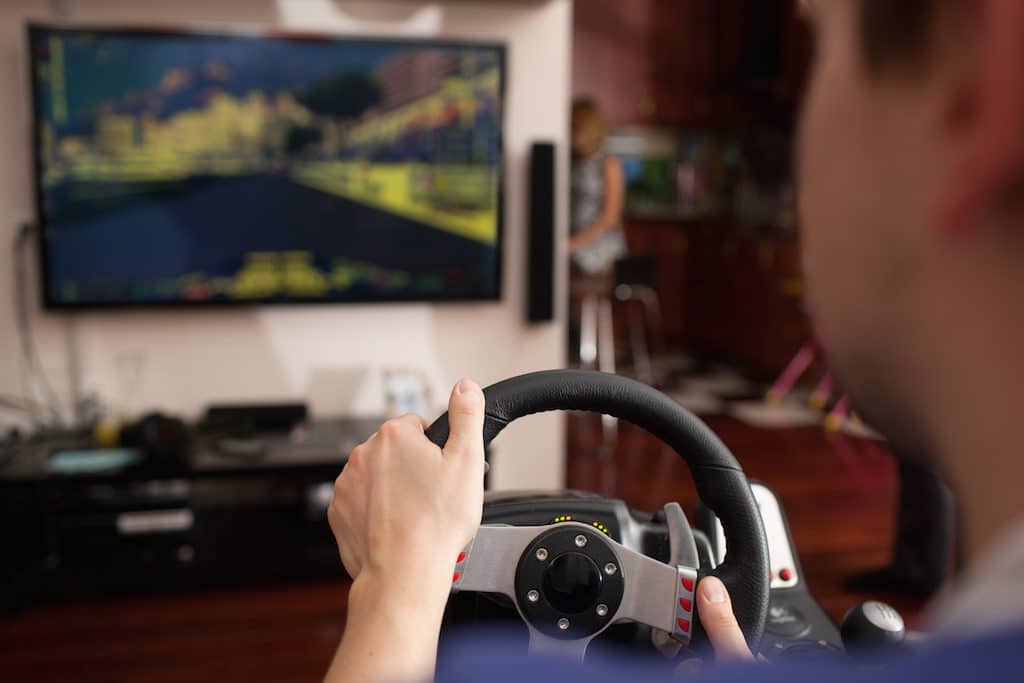Game On: How Video Games Can Assist With Stroke Recovery

Stroke patients often face an unfortunate reality—80 percent of them will not regain full use of their arm and hand movements. Strokes are one of the most common causes of physical disability, and many stroke survivors suffer continued effects from impairment, like an inability to return to work and having limited independence. Early, intensive rehabilitation offers the best outcome, but only one-third of patients discharged after immediate medical treatment will continue the recommended therapy at home.
In addition, for chronic patients who have received six or more months of rehabilitation and still experience limited function, it is often difficult to maintain sufficient levels of activity. Many patients continue to live with their symptoms and a lower quality of life. This dormancy may lead to further physical deterioration, affect mental capabilities, or lead to additional strokes or hospitalization.
A New Kind of Therapy
As more effort and research are being devoted to video games and virtual reality for stroke recovery treatment, there may be a new solution on the horizon. Ideally, therapy is repetitive, task-specific, challenging, and exciting—video games address these needs and more through one of the brain’s natural processes called neuroplasticity, where nerve cell connections are recreated and remodeled.
The brain strengthens neural networks through tasks that are repeated and habitual. These actions are naturally easier to perform due to neural pathways being well traveled. Doing or thinking about something new or in a different manner allows the brain to create new pathways or awaken old ones. Activities designed in video games help patients do just that.
Gaming Systems and Devices
Gaming devices come in many forms, from a simple wand for broad, sweeping arm gestures to a glove with dozens of specific sensors measuring wrist, palm, and finger movements. Patients may also have the option to sit, stand, or lie down while using these systems, further customizing treatment and making it convenient for those with limited mobility.
Some gaming systems, like the SaeboReJoyce, are available for both in-clinic or at-home settings, offer interactive experiences incorporating full range of movement, various grip patterns, and gradual complexity that have been shown to improve arm motor function by up to five times more than that achieved through traditional forms of therapy.
Benefits of Using Games

Increases participation. One key element to successful rehabilitation is repetition of exercises, but repeating the same movements hundreds of times can be far from exciting. Games allow patients to make repeated, calculated movements—in some cases with constraint-induced movement and other specific rehabilitative methods—without being aware of time passing or that they are even exercising. More participation leads to increased brain activity and inspires muscle growth. Patients can play and perform these exercises on a daily basis without feeling bored. At the same time, they can receive feedback about their improvement.
Builds excitement. The intensity of current stroke recovery treatments often does not make enough of an impact. Testing in animal subjects revealed that therapy administered sooner and in higher doses may be more effective at rehabilitating motor function. Patients who are more excited about their regime—perhaps when playing a video game—are more likely to play often, work harder, and take fewer breaks than they would while doing traditional stroke recovery treatments.
Offers convenient, affordable options. Affordable options are out there in already existing video game consoles and touch-screen tablets available to the public. Some patients may have these consoles in their homes. This is a wonderful solution as lack of funds or access to rehabilitative facilities and transportation often keeps patients from receiving therapy on a regular basis. The privacy and comfort of being able to receive treatment at home is also paramount, as continuation of therapy after initial, intensive rehabilitation ends and at-home participation tends to wane. Patients might choose to invite friends and family members to play with them or observe, providing further motivation and encouragement.
Recovery Through Video Games

Imagine yourself in a virtual bowling alley with unlimited frames and the freedom to perfect your swing and aim. You receive immediate feedback in the form of instant replays of each roll and a cumulative score. You’ll have completed dozens of repetitive movements, at your own pace and level of effort, while also thinking critically about how you might improve on your next turn. You may have the option to play competitively with others or simply try to better yourself. Now compare this to a more formal rehabilitative setting where you’re fully aware of doing the same calculated movements over and over with limited rewards.
Beyond Traditional Therapy
A 2015 group study of stroke patients aged 29 to 78 revealed the incorporation of video games to be very motivating. Rehabilitative results were no better in one group than in another, but the gaming group reported higher levels of contentment. Increased engagement and motivation is credited to the competitive nature of the games, as well as the inclusion of music and fun imagery.
Other simulations include playing tennis, boxing, being part of a circus, rafting down a river, and more. Participation in these activities, while they may not realize it, challenges patients to perform movements with more dexterity and strength. Focused on scoring more points or advancing in the game, patients get their heart rate up and move their hands and arms; if standing, they also exercise trunk control and balance. Before patients know it, daily tasks like tying their shoes, opening a bottle, or getting dressed may become easier.
To ensure the benefits of gaming therapy stick, patients can be reminded in-game to reflect on how they might use a weakened area of their body for routine activities, just as they would be told by a physical or occupational therapist. Some games have been been designed to be telemonitored so a therapist can remotely see a patient’s progress and provide feedback.
Are Games the Answer?
Despite two decades of research and promising results, the field has much further to go before virtual rehabilitation becomes more mainstream. While the high level of variability within the games allows for more adaptability and targeted treatments for patients, this combined with different neurological conditions makes results difficult to compare.
Funding is limited, and no large-scale studies have measured whether virtual therapy works better than years of traditional therapy. The burden of proof lies in more research with larger study sizes of patients, especially immediately after strokes occur when the brain is primed for repair and progress.
The Future of Video Game Therapy
With nearly 800,000 Americans suffering strokes annually and 75 percent reporting lasting symptoms, continued therapy options—like those using video games—are incredibly important. Progress has been made with modern therapies and evidence of the brain’s natural plasticity. And while it’s clear patients can benefit from playing video games, more scientific evidence is needed to determine whether gaming alone could be enough. A combination method linking traditional physical devices and methods with mental learning tools, like those demonstrated in video games, might lead to interesting improvements.
Connecting patients with games in their interest areas and customizing their preferred settings are options unique to this new method. More motivation leads to increased play and exercise, which improves the likelihood of the brain bypassing damaged zones and building new neural connections. The biggest implication so far may be that video games allow patients to sidestep many of their frustrations and fine tune a treatment protocol that will keep them more engaged.
All content provided on this blog is for informational purposes only and is not intended to be a substitute for professional medical advice, diagnosis, or treatment. Always seek the advice of your physician or other qualified health providers with any questions you may have regarding a medical condition. If you think you may have a medical emergency, call your doctor or 911 immediately. Reliance on any information provided by the Saebo website is solely at your own risk.



